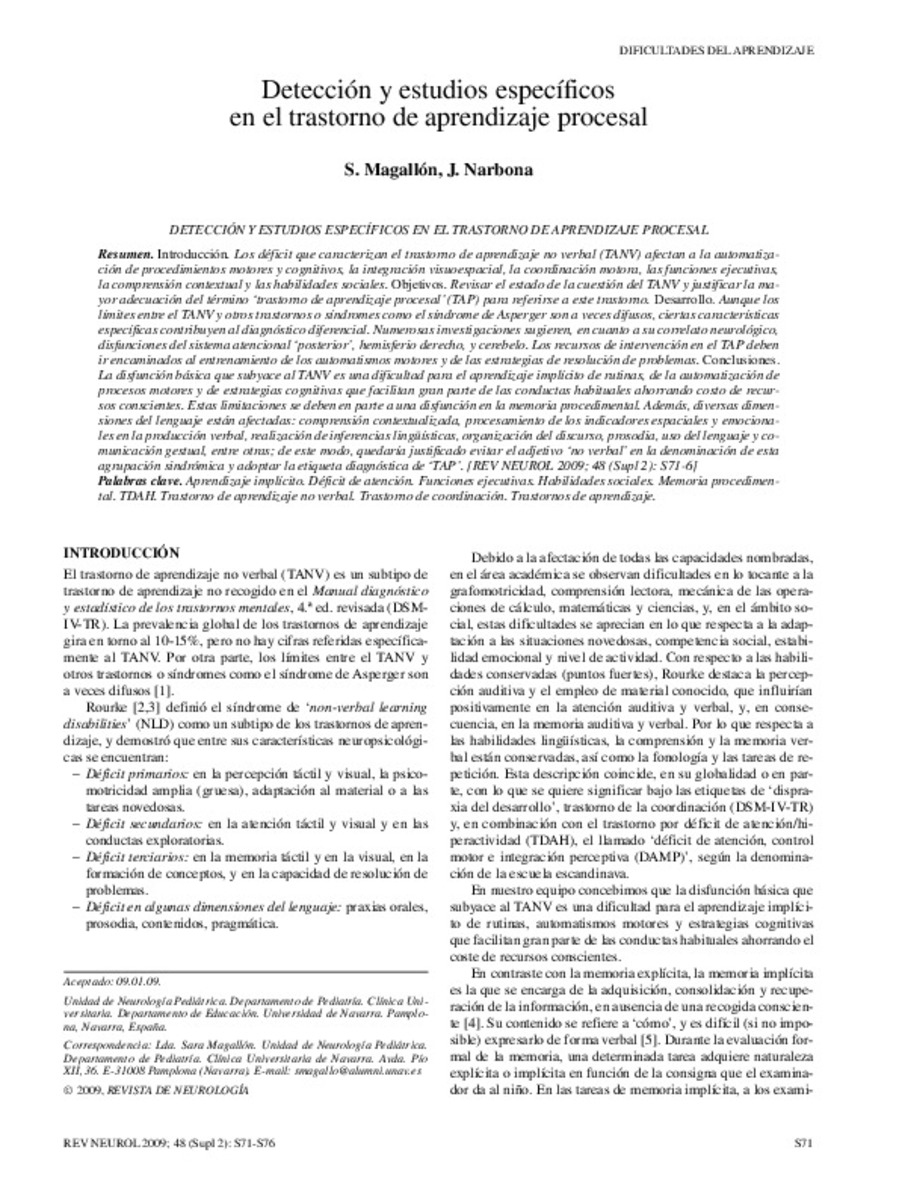Detección y estudios específicos en el trastorno de aprendizaje procesal
Palabras clave :
Cognition Disorders/diagnosis/physiopathology
Learning Disorders/diagnosis/physiopathology
Nonverbal Communication
Fecha de publicación :
2009
Cita:
Magallon S, Narbona J. Detección y estudios específicos en el trastorno de aprendizaje procesal. Rev Neurol 2009 Feb 27;48 Suppl 2:S71-6.
Aparece en las colecciones:
Estadísticas e impacto
0 citas en

0 citas en

Los ítems de Dadun están protegidos por copyright, con todos los derechos reservados, a menos que se indique lo contrario.







